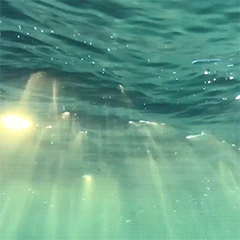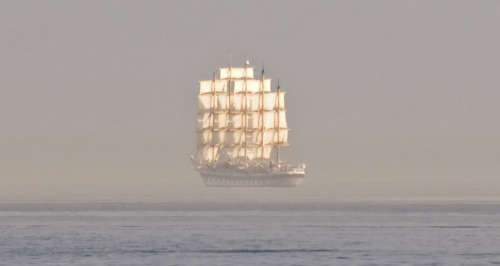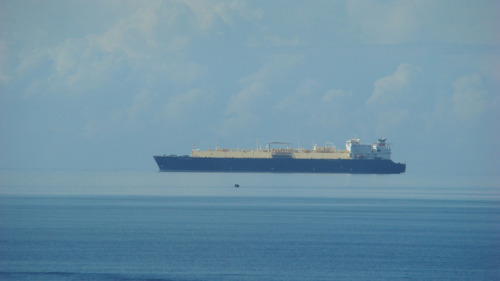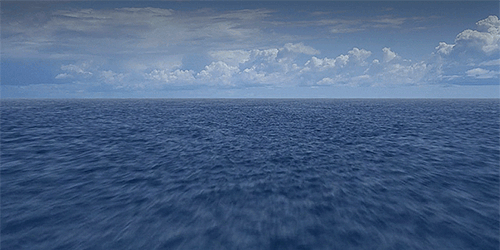Ocean Waves By Ryanpernofski


Ocean waves by ryanpernofski
More Posts from Fishyaesthetics and Others






Fata Morgna
A Superior Mirage that comes from the Italian term named after the Arthurian sorceress Morgan le Fay, from a belief that these mirages, often seen in the Strait of Messina, were fairy castles in the air or false land created by her witchcraft to lure sailors to their deaths. It’s also believed that this illusion caused the myth of The Flying Dutchman to emerge.


Three suns on clear water.
–
Twitter / Shop / INPRNT / Patreon
MerMay Day 10!!!


https://www.instagram.com/p/BwkiTWRnpe0/
Discover Sharks
Words by @calypsostarcharters female shark showing off swimming on her back! We do not see them do this very often at all, in fact it was the first time Captain Dave had seen it himself! Footage by guest @wendy_b_l_.
Countdown to Calving at Antarctica's Brunt Ice Shelf

Cracks growing across Antarctica’s Brunt Ice Shelf are poised to release an iceberg with an area about twice the size of New York City, (about 604 square miles). It is not yet clear how the remaining ice shelf will respond following the break, posing an uncertain future for scientific infrastructure and a human presence on the shelf that was first established in 1955.

NASA Earth Observatory image by Joshua Stevens, using Landsat data from the U.S. Geological Survey. Story by Kathryn Hansen, with image interpretation by Chris Shuman (NASA/UMBC).
The above image, from the Operational Land Imager (OLI) on Landsat 8, shows the area on January 23, 2019. The crack along the top of the image—the so-called Halloween crack—first appeared in late October 2016 and continues to grow eastward from an area known as the McDonald Ice Rumples. The rumples are due to the way ice flows over an underwater formation, where the bedrock rises high enough to reach into the underside of the ice shelf. This rocky formation impedes the flow of ice and causes pressure waves, crevasses, and rifts to form at the surface.
The more immediate concern is the rift visible in the center of the image. Previously stable for about 35 years, this crack recently started accelerating northward as fast as 4 kilometers per year.
Calving is a normal part of the life cycle of ice shelves, but the recent changes are unfamiliar in this area. The edge of the Brunt Ice Shelf has evolved slowly since Ernest Shackleton surveyed the coast in 1915, but it has been speeding up in the past several years.
Make sure to follow us on Tumblr for your regular dose of space: http://nasa.tumblr.com

-
 raincloudinajar reblogged this · 2 weeks ago
raincloudinajar reblogged this · 2 weeks ago -
 unapolageticallyb liked this · 2 weeks ago
unapolageticallyb liked this · 2 weeks ago -
 lonelydispute reblogged this · 2 weeks ago
lonelydispute reblogged this · 2 weeks ago -
 passionxfury reblogged this · 2 weeks ago
passionxfury reblogged this · 2 weeks ago -
 bi-panmandate reblogged this · 2 weeks ago
bi-panmandate reblogged this · 2 weeks ago -
 madixonbeer reblogged this · 2 weeks ago
madixonbeer reblogged this · 2 weeks ago -
 sofie-shae liked this · 2 weeks ago
sofie-shae liked this · 2 weeks ago -
 megansknees reblogged this · 2 weeks ago
megansknees reblogged this · 2 weeks ago -
 cynnsei liked this · 2 weeks ago
cynnsei liked this · 2 weeks ago -
 svd-space-boy reblogged this · 2 weeks ago
svd-space-boy reblogged this · 2 weeks ago -
 pottac22 liked this · 2 weeks ago
pottac22 liked this · 2 weeks ago -
 pottac22 reblogged this · 2 weeks ago
pottac22 reblogged this · 2 weeks ago -
 random-lesbian-girl liked this · 2 weeks ago
random-lesbian-girl liked this · 2 weeks ago -
 shehasthatvibe liked this · 2 weeks ago
shehasthatvibe liked this · 2 weeks ago -
 salvadorianstingray reblogged this · 2 weeks ago
salvadorianstingray reblogged this · 2 weeks ago -
 theebrattybbyy reblogged this · 2 weeks ago
theebrattybbyy reblogged this · 2 weeks ago -
 justthinkoffires4 reblogged this · 2 weeks ago
justthinkoffires4 reblogged this · 2 weeks ago -
 justthinkoffires4 liked this · 2 weeks ago
justthinkoffires4 liked this · 2 weeks ago -
 jacklit404 liked this · 2 weeks ago
jacklit404 liked this · 2 weeks ago -
 flameccontrol reblogged this · 2 weeks ago
flameccontrol reblogged this · 2 weeks ago -
 wedontrustyou reblogged this · 2 weeks ago
wedontrustyou reblogged this · 2 weeks ago -
 peacefull-soulss reblogged this · 2 weeks ago
peacefull-soulss reblogged this · 2 weeks ago -
 riddimrackoon reblogged this · 2 weeks ago
riddimrackoon reblogged this · 2 weeks ago -
 riddimrackoon liked this · 2 weeks ago
riddimrackoon liked this · 2 weeks ago -
 dreamsindaylight reblogged this · 2 weeks ago
dreamsindaylight reblogged this · 2 weeks ago -
 i-ate-da-apple reblogged this · 2 weeks ago
i-ate-da-apple reblogged this · 2 weeks ago -
 i-ate-da-apple liked this · 2 weeks ago
i-ate-da-apple liked this · 2 weeks ago -
 aconstantparallel reblogged this · 2 weeks ago
aconstantparallel reblogged this · 2 weeks ago -
 l0velxss reblogged this · 2 weeks ago
l0velxss reblogged this · 2 weeks ago -
 moonrine liked this · 2 weeks ago
moonrine liked this · 2 weeks ago -
 trufflesandmilk reblogged this · 2 weeks ago
trufflesandmilk reblogged this · 2 weeks ago -
 stand-by-me reblogged this · 2 weeks ago
stand-by-me reblogged this · 2 weeks ago -
 battygyal reblogged this · 2 weeks ago
battygyal reblogged this · 2 weeks ago -
 thewyrdbird liked this · 2 weeks ago
thewyrdbird liked this · 2 weeks ago -
 mclaughlane reblogged this · 2 weeks ago
mclaughlane reblogged this · 2 weeks ago -
 forestmousy reblogged this · 2 weeks ago
forestmousy reblogged this · 2 weeks ago -
 hunnybunnyburrows reblogged this · 3 weeks ago
hunnybunnyburrows reblogged this · 3 weeks ago -
 ohana-system liked this · 3 weeks ago
ohana-system liked this · 3 weeks ago -
 rosenrites reblogged this · 3 weeks ago
rosenrites reblogged this · 3 weeks ago -
 missalllanea liked this · 3 weeks ago
missalllanea liked this · 3 weeks ago -
 underwaterarcades reblogged this · 3 weeks ago
underwaterarcades reblogged this · 3 weeks ago -
 pushingdaisyjohnson reblogged this · 4 weeks ago
pushingdaisyjohnson reblogged this · 4 weeks ago -
 traincarsandstars reblogged this · 1 month ago
traincarsandstars reblogged this · 1 month ago -
 starlighttrain reblogged this · 1 month ago
starlighttrain reblogged this · 1 month ago -
 errorexe666 liked this · 1 month ago
errorexe666 liked this · 1 month ago -
 richsatisfyingjuicylife reblogged this · 1 month ago
richsatisfyingjuicylife reblogged this · 1 month ago -
 x3xnoelle reblogged this · 1 month ago
x3xnoelle reblogged this · 1 month ago -
 bulutlarmiisalii liked this · 1 month ago
bulutlarmiisalii liked this · 1 month ago -
 fancydelusionsalad liked this · 1 month ago
fancydelusionsalad liked this · 1 month ago -
 bitkisellhayat reblogged this · 1 month ago
bitkisellhayat reblogged this · 1 month ago
All things having to do with the ocean and it's wildlife. sometimes mermaids and pirates. whatever i feel like posting. main blog is himynameissueshe
219 posts